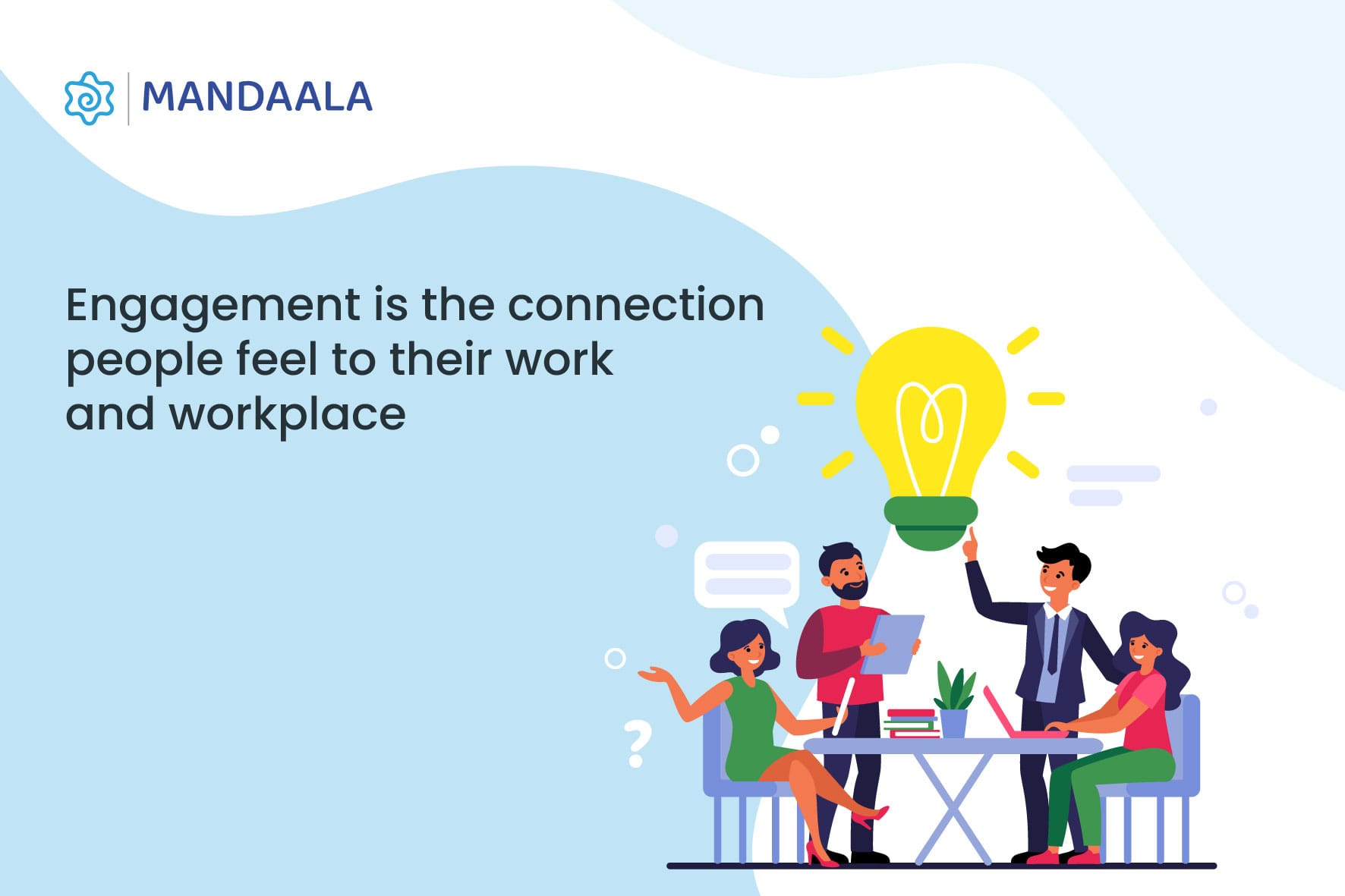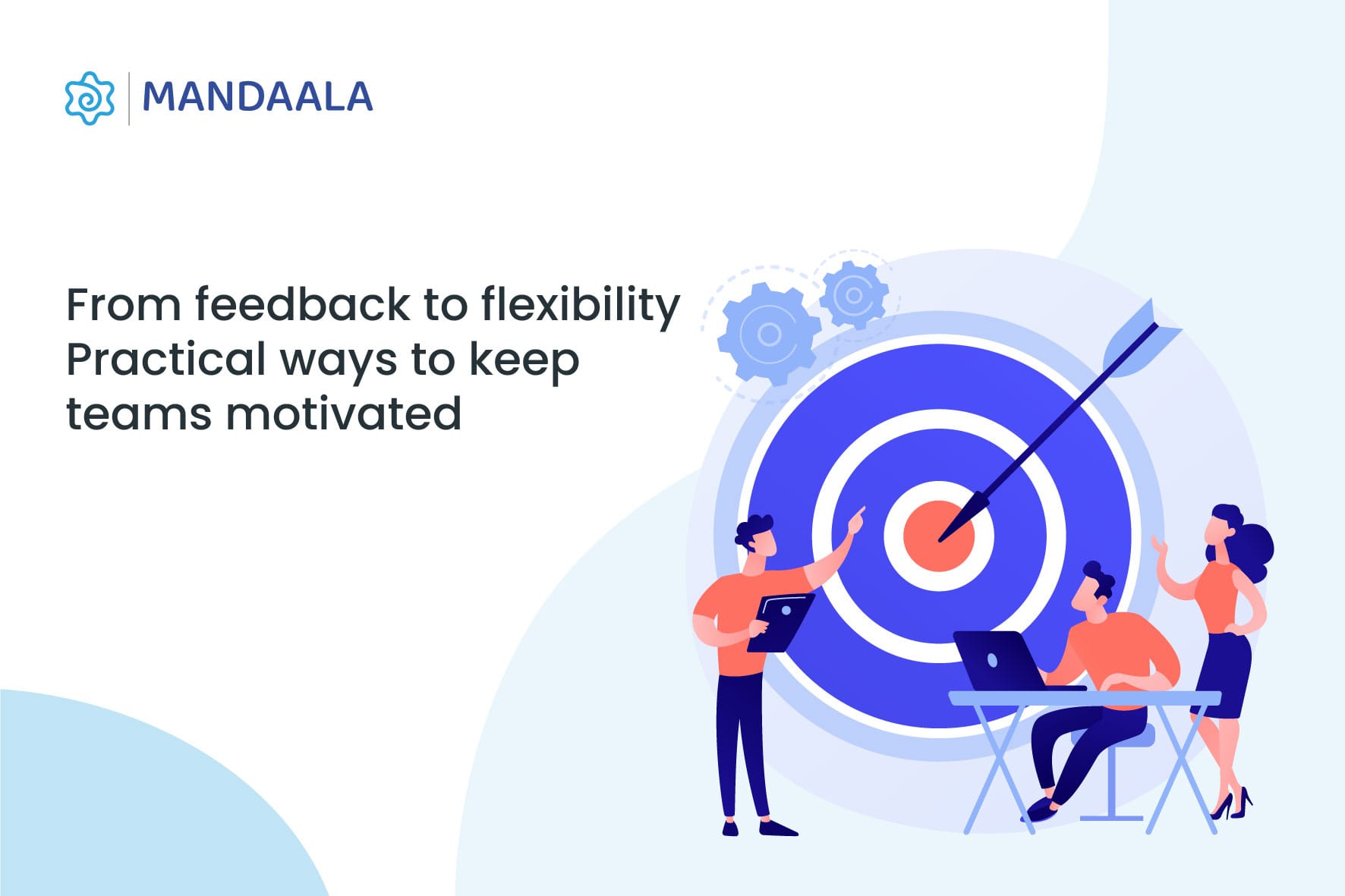Employee Engagement Strategies : 30 Proven Ways to Boost Morale and Productivity

Engaged employees are more productive, motivated, and likely to stay with an organisation. But keeping people engaged is an ongoing challenge for HR teams and business leaders.
Without the right strategies, workplaces risk low morale, poor performance, and high turnover. That’s why having a clear approach to employee engagement is essential.
This article outlines 30 practical strategies to help improve workforce engagement, boost morale, and create a more positive and productive work environment.
What is Employee Engagement, and Why is it Important?

Employee engagement is the emotional and mental connection employees have with their work, their team, and the organisation. It’s what drives people to care about what they do, take initiative, and stay committed, not just show up for a pay cheque.
And yet, many workplaces struggle to get this right. According to Gallup’s 2023 report, only 23% of employees worldwide feel engaged at work. The remaining majority either feel disconnected or are actively disengaged, leading to massive losses in productivity. Gallup estimates this loss at $8.8 trillion globally each year.
Engaged employees are more likely to stay, perform better, and contribute to a positive work culture. Disengaged ones often bring higher attrition, lower morale, and reduced team performance. That’s why employee engagement isn’t just an HR metric, it’s a business priority.
Effective Employee Engagement Strategies: 30 Ways to Boost Morale and Productivity

Here are 30 effective employee engagement strategies to help you build a more motivated, connected, and high-performing workforce.
1. Foster Open Communication
Open, honest communication lays the foundation for strong employee engagement. When employees feel heard and informed, they’re more likely to trust leadership and stay invested in the organisation’s goals. It’s one of the most essential strategies to improve employee engagement across any team.
2. Recognise and Reward Efforts
Recognition is one of the simplest ways to improve employee engagement, but it’s often overlooked. A well-timed appreciation, whether it’s public praise or a tangible reward, shows employees their efforts are noticed and valued. This consistent feedback loop helps reinforce the behaviours and contributions that matter most to the organisation.
3. Provide Career Development Opportunities
Employees are more engaged when they see a future for themselves in the organisation. Offering clear growth paths, skill-building programs, and upskilling opportunities signals that the company is invested in their long-term success. It’s one of the most sustainable workforce engagement strategies for boosting retention and motivation.
4. Create a Positive Work Environment
Employee engagement thrives in spaces where people feel safe, respected, and supported. A positive environment isn’t built overnight, it comes from everyday behaviours: managers who check in, teams that collaborate without blame, and policies that prioritise fairness and inclusion. When employees feel good about where they work, they bring their best to what they do.
5. Offer Flexible Work Options
Flexibility has become a key driver of employee engagement. Whether it’s remote work, flexible hours, or hybrid setups, giving employees more control over when and where they work helps build trust and reduce burnout. It shows that the organisation respects their time and priorities, both inside and outside of work.
6. Align Employee Roles with Organisational Goals
When job roles drift away from what the business actually needs, employees can feel lost or undervalued. Regularly reviewing responsibilities, and removing outdated or irrelevant tasks, keeps work focused and meaningful. Clear, purposeful roles are key to sustaining long-term employee engagement and productivity.
7. Promote Employee Autonomy
When employees have the freedom to make decisions about their work, engagement rises. Autonomy signals trust, reduces micromanagement, and encourages accountability. It’s a practical way to respect individual work styles while driving better outcomes.
8. Conduct Regular Feedback Surveys
You can’t improve employee engagement without understanding what’s missing. Anonymous surveys, whether quarterly or through regular pulse checks, create a safe space for honest feedback. The insights help leaders address real issues instead of relying on assumptions.
9. Build Strong Team Relationships
Employee engagement improves when peer relationships go beyond surface-level coordination. Creating space for meaningful interactions, through collaborative projects, peer feedback, or shared goals, helps people build trust and feel supported. These connections make the workplace more engaging, especially in fast-paced or hybrid environments.
10. Offer Competitive Compensation and Benefits
Employees can’t stay engaged if they feel underpaid or undervalued. Fair compensation satisfies basic financial needs, while competitive pay reflects the organisation’s respect for skills and contribution. Add to that well-structured benefits and performance-based incentives, and you give employees a tangible reason to stay invested, not just stay employed.
11. Create a Culture of Continuous Learning
One of the most practical employee engagement strategies is making learning part of daily work. Offer short courses, encourage peer learning, and tie upskilling to real tasks. When growth is ongoing and visible, employees stay motivated, and less likely to look elsewhere.
12. Set Clear Expectations and Goals
Engagement drops when goals are vague. Employees need clarity on what’s expected and how success is measured. Structured plans like 30-60-90-day frameworks help new and transitioning employees hit the ground running, making this one of the most practical employee engagement strategy examples.
13. Provide Mentorship Opportunities
Build structured mentorship into the employee experience, from onboarding to career transitions. Match mentors based on role, skill, or growth goals, and set a clear timeline with space for regular check-ins. This kind of guided support helps employees navigate challenges, build confidence, and feel more invested in their long-term journey with the organisation.
14. Empower Employee Recognition Programs
A strong recognition program needs structure, consistency, and visibility. Set clear criteria, enable peer or manager-driven nominations, and use merchandise-based program, like branded rewards or curated recognition kits, to turn appreciation into something employees can see and celebrate.
15. Ensure Work-Life Balance
Burnout is one of the biggest barriers to employee engagement. Setting boundaries around work hours, encouraging time off, and supporting flexible schedules shows employees their wellbeing matters. Balance isn’t a perk, it’s a strategy to keep energy and motivation sustainable.
16. Lead by Example
Employee engagement starts at the top. When leaders model the behaviours they expect, whether it’s transparency, collaboration, or work-life balance, it sets the tone for the entire team. Engagement grows in environments where values are practised, not just preached.
17. Celebrate Milestones and Achievements
Milestones like work anniversaries or project wins deserve more than a message in passing. Formal programs, like long service awards or milestone recognition, help mark these moments with intention. Whether it’s a thoughtful note, public shout-out, or a bit of celebratory swag, consistent recognition reminds employees their time and effort matter.
18. Provide Wellness Programs
Wellness isn’t just a gym pass. Build programs that support energy, recovery, and healthy habits, like health check-ups, flexible breaks, nutrition options, and ergonomic setups. These help prevent burnout and keep employees present and productive.
19. Encourage Innovation and Idea Sharing
Employees engage more when they can contribute beyond their job descriptions. Create simple channels, like innovation boards, team brainstorms, or cross-functional idea groups, where input is welcomed and tracked. It’s one of the most overlooked strategies to improve employee engagement because it builds ownership, not just output.
20. Create a Supportive Feedback Structure
A strong feedback culture is one of the most practical employee engagement strategies. Move beyond annual reviews, build regular check-ins, two-way conversations, and peer feedback into your workflow. When feedback is specific, safe, and focused on growth, it builds trust and drives better performance.
21. Build a Strong Company Culture
Define the behaviours and values that matter, and bake them into daily workflows, not just posters. From onboarding to recognition, culture should guide how decisions are made and how people work together. It’s one of the most sustainable strategies to improve employee engagement.
22. Offer Growth Incentives
Tie incentives to skill-building and internal growth, not just output. Create a system where employees earn rewards for completing learning milestones, mentoring peers, or taking on stretch assignments. These targeted incentives make development a shared goal, not just a personal one
23. Foster Social Connections
Workplace relationships are a core driver of employee engagement. Set up opportunities for teams to connect beyond tasks, through buddy systems, shared interest groups, or informal meetups. When people feel socially connected, collaboration improves and work feels more human.
24. Provide Opportunities for Employee Ownership
Move beyond task delegation, give employees ownership of outcomes. Let them lead projects, shape decisions, or own internal initiatives end-to-end. This kind of trust builds accountability, confidence, and deeper workforce engagement.
25. Encourage Cross-Department Collaboration
Create formal opportunities for cross-functional work, like interdepartmental project teams, knowledge-sharing sessions, or temporary assignments in other functions. This helps employees build broader context, break silos, and feel more connected to the organisation as a whole.
26. Prioritise Mental Health Support
Go beyond surface-level wellness, build mental health into your policies, not just your perks. Train managers to recognise signs of burnout, offer access to counselling, and normalise mental health conversations at work. Engagement drops fast when stress is invisible and unsupported.
27. Make Work Meaningful
Help employees connect their tasks to a larger purpose. Use onboarding, manager conversations, and internal storytelling to show how their work impacts teams, customers, or the company’s mission. When the “why” is clear, engagement runs deeper.
28. Keep Employees Informed
Regular updates help employees stay aligned with the bigger picture. Use structured channels to share changes, decisions, and priorities, transparently and without delay. When people aren’t left guessing, they stay focused, confident, and engaged.
29. Encourage Personal Growth and Development
Support growth that isn’t tied to KPIs, like side projects, sabbaticals, or access to passion-based learning. When employees feel encouraged to develop beyond their role, it builds loyalty and long-term engagement.
30. Provide a Safe and Inclusive Work Environment
A safe workplace is one where people can do their job without barriers, physical or cultural. Invest in accessible infrastructure, ergonomic tools, and clear safety protocols. At the same time, set norms that discourage interruptions, bias, or retaliation when employees raise concerns.
Bringing Your Employee Engagement Strategy to Life
There’s no single formula for engagement, but there are proven strategies to get you closer. The key is to act with intention: tailor your approach, listen often, and follow through. Whether you're refining existing workforce engagement strategies or building them from scratch, the real impact comes from consistency.
Because in the end, employee engagement isn’t built in moments, it’s built every day.
Mandala is the solutions arm of Printstop India.